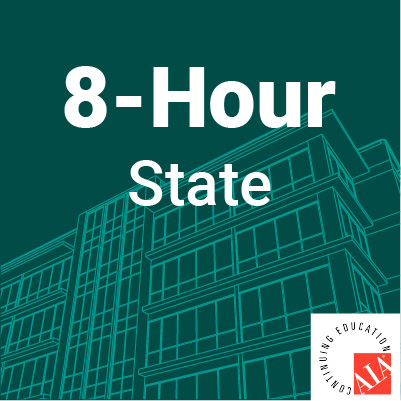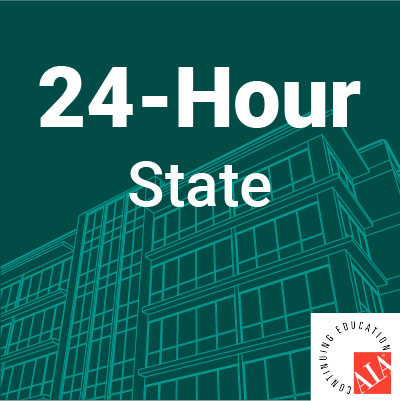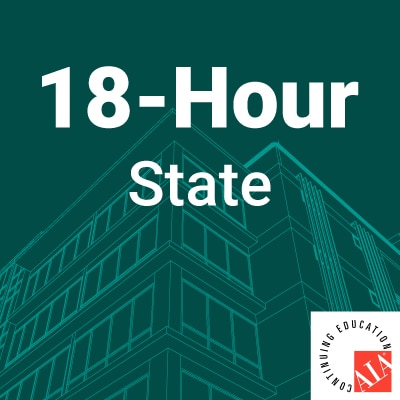Description
This 8-hour package contains:
4 Hr Audio Course: Designing Worship Facilities | #AIABLTI515.22
2 Hr Audio Course: Nebraska Required: Ethics & Morality | AIABLTI456.22
2 Hr Audio Course: Speaking of Older Buildings | #AIABLTI517
Designing Worship Facilities
Instructor: Paul Spite
Many decisions need to be made when undertaking the design of a facility to be used for worship. Some are esoteric, dealing with considerations on how to design the structure to best approach God. But others are more mundane, concerned with the fact that before the building may be occupied, the designer must first please men. This course will deal with the second.
Satisfying the needs of people involved in the project will involve those both inside and outside of the client group. Unless societal guidelines, like codes, zoning restrictions and existing easements are honored, regulatory agencies can make sure the building process doesn’t begin. Lending agencies will impose restrictions that must be honored. Site conditions will result in sometimes inflexible conditions on how the land may be used. The needs of the building community that will be translating construction documents into a physical reality must be addressed, as well as the way that process will come to fruition. Finally, every member of the religious group called the client will be bringing their own ideas to the table regarding the desired end result.
This course is designed to look at the many, sometimes seemingly endless parameters and decisions that must be made and addressed, before and during the design of a worship facility.
This course teaches the following specific knowledge and skills.
- A thorough understanding of the types of parameters that must be satisfied in the design of worship facilities
- An increased awareness of the various functions usually needing accommodated in worship facilities
- Knowledge of basic options available to religious groups facing the need to change or expand their facilities to accommodate growth
- How to guide religious groups in acknowledging the many costs besides the building, involved in completing projects, considering sources for capital and determining their financial feasibility of proceeding
- Educating clients regarding various players who will be involved in making their dream a reality and how to go about selecting them
- Different societal guidelines that act as parameters to be met while designing worship facilities
- Master planning considerations that should be incorporated in sites, buildings, systems and furnishings for religious clients
- Basic acoustic considerations to be addressed while designing the primary spaces of buildings used for assembly purposes
- Practical considerations and rules of thumb that help with initial layouts and schematic design of worship facilities
- Typical areas of concern found in building code restrictions, tending to govern the design of worship facilities.
This course covers:
- Introduction
- Options for Growth
- Counting the Costs
- Potential Sources of Capital
- Players in the Process
- Master Planning
- Acoustics in Worship
- Practical Concerns / Rules of Thumb
- Materials and Choices
- Rules and Regulations
- Building Codes Pertinent to Worship Facilities
- Conclusion
Ethics & Morality
Instructor: Joshua Francis
Having a reputation for straight forward business practices can only help your business. In the current environment of corporate malfeasance, customers will welcome and value a company that promotes a culture of trust and respect. What should potential customers know about your company? Is reliable customer service and forthright dialogue of value to you as an owner? This two hour video course will provide an overview of ethical theory and application that will help you establish and maintain hard earned business relationships.
After completing this course participants will be able to:
- Identify the fundamental theories of ethics and their respective weaknesses.
- Describe how to effectively apply a Code of Ethics to the current policies, rules and guidelines governing an organization that will ultimately serve the needs of the customer.
- Summarize the components of a well designed Code of Conduct, including standards, obligations and consequences for non-compliance.
- Create a Code of Conduct that embodies the ethics that accurately reflect the company core values and principles.
This Course Covers:
- Ethics vs. Morals
- Social Norms
- Ethics, Values, and Your Business
- Stakeholders
- Introduction to Ethical Theory – (Duty, Consequence, and Virtue)
- Duty Based Ethics
- Consequence and Virtue Based Ethics
- Basic Code of Ethics / Code of Conduct
- Simplified and Comprehensive Code of Ethics
Speaking of Older Buildings
Instructor: Paul Spite
When the question of what to do with older buildings arises, it usually resolves itself to choices of reusing them as is, repairing them, restoring them, repurposing them or replacing them.
There is an old saying regarding existing buildings that goes like this. “It has good bones.” Any facility, free of structural defects and doing a reasonably good job of keeping water out, represents a tangible asset. The trick to maximizing the value of existing structures, especially in areas where changing economic factors have also resulted in changing market demands, is to approach their reuse from a different point of view. The judicious employment of renovation funds should not be based on restoring them to a previous use, but making them suitable for other markets in which the existing bones might enable a whole new purpose.
This presentation proposes criteria that may prove valuable in determining which option For the disposition of older buildings represents the best value for the owner, the buyer or the community in which the structure is located. It will also briefly examine a potential business opportunity in a collaboration between architects and commercial real estate agents.
For the benefit of everyone involved, any reuse of older buildings is better than none. Some thought just needs to be put into the options of how to do so, before any decision is made on to the best way to proceed.
By the end of this course, the design professional will be able to:
- Understand the various stakeholders seeking to provide input into the end use of a newly acquired aged structure.
- Readily identify system components needing to be included in the assessment of an older or historic building, as part of determining how to proceed with its further use.
- Be able to explain what determine historic significance and how cultural significance plays a role in the practicality of restoring all or part of a heritage building.
- Realize principles inherent in a decision to move forward with adaptive reuse, both the benefits and the difficulties encountered.
- Develop a solid rationale for why or why not an older building should be demolished and replaced with a more modern structure on the same site.
- Have a grasp of what can be accomplished through a collaboration between architects and commercial realtors, in regards to the reuse of older buildings.
This course covers:
- Assessing Options
- Reuse
- Repair
- Restore
- Repurpose
- Replace
- Realtor/Architect Collaboration
- Summary
Credit(s) earned on completion of this course will be reported to AIA CES for AIA members. Certificates of Completion for both AIA members and non-AIA members are available to print upon completion of the course.



